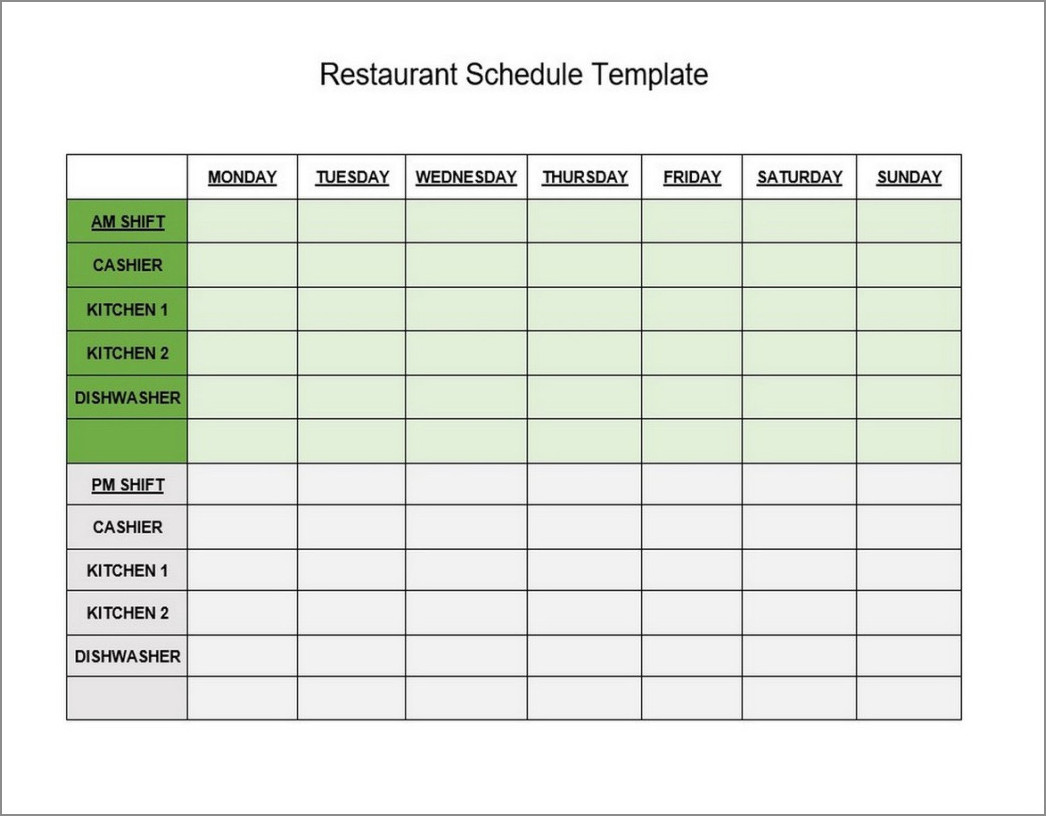Running a restaurant requires careful planning and organization to ensure smooth operations. One key aspect of this is creating a well-structured restaurant schedule. A properly designed schedule not only helps in managing staff efficiently but also ensures a seamless dining experience for customers.
In this article, we will delve into the importance of a restaurant schedule and provide practical tips on how to create an effective one.
Why is a Restaurant Schedule Important?
A restaurant schedule serves as a roadmap for the daily operations of the establishment. It outlines the shifts and duties of each staff member, allowing for proper coverage during busy hours and ensuring that all necessary tasks are completed. Here are some reasons why a well-structured restaurant schedule is crucial:
- Efficient Staff Management: A schedule helps in optimizing staff resources by assigning the right number of employees at the right times. This prevents understaffing or overstaffing situations, leading to improved productivity.
- Consistent Customer Service: With a well-planned schedule, you can ensure that there are enough staff members available to attend to customers promptly. This helps maintain a high level of service quality and customer satisfaction.
- Reduced Labor Costs: By accurately forecasting staffing needs and avoiding unnecessary overtime, a restaurant schedule can help control labor expenses. This is especially important for businesses operating on tight budgets.
- Effective Task Management: Assigning specific tasks to each staff member in the schedule allows for better coordination and accountability. It ensures that all essential duties, such as food preparation, table setup, and cleaning, are accomplished efficiently.
- Improved Employee Morale: By providing a clear schedule in advance, employees can plan their personal lives around work commitments. This helps in creating a positive work-life balance, leading to higher job satisfaction and employee retention.
How to Create an Effective Restaurant Schedule?
Creating an effective restaurant schedule requires careful consideration of various factors. Here are some key steps to follow:
1. Analyze Historical Data
Start by analyzing historical data to identify peak hours and busy days. This will help you determine the number of staff members required during different times of the day and week.
2. Take Employee Availability into Account
Consider the availability and preferences of your employees when creating the schedule. Take into account any time-off requests or scheduling constraints they may have. This will help in creating a fair and balanced schedule that meets both business and employee needs.
3. Assign Tasks and Roles
Assign specific tasks and roles to each staff member in the schedule. Clearly outline their responsibilities, such as server, bartender, host, or cook. This will ensure that everyone knows their duties and can work together seamlessly.
4. Utilize Scheduling Software
Invest in scheduling software that can simplify the process and automate certain tasks. These tools can help in creating schedules quickly, managing shift swaps, and sending notifications to employees about any changes or updates.
5. Communicate and Update Regularly
Regularly communicate the schedule to all staff members and ensure they are aware of any changes or updates. Utilize a centralized platform, such as a staff bulletin board or a mobile app, to share the schedule and facilitate easy communication.
6. Seek Feedback
Encourage feedback from your employees regarding the schedule. This will help you understand any concerns or issues they may have and make necessary adjustments to improve overall satisfaction.
7. Monitor and Adjust
Monitor the effectiveness of the schedule by tracking key performance indicators, such as labor costs, customer satisfaction, and employee turnover. Make adjustments as needed to optimize operations and address any challenges.
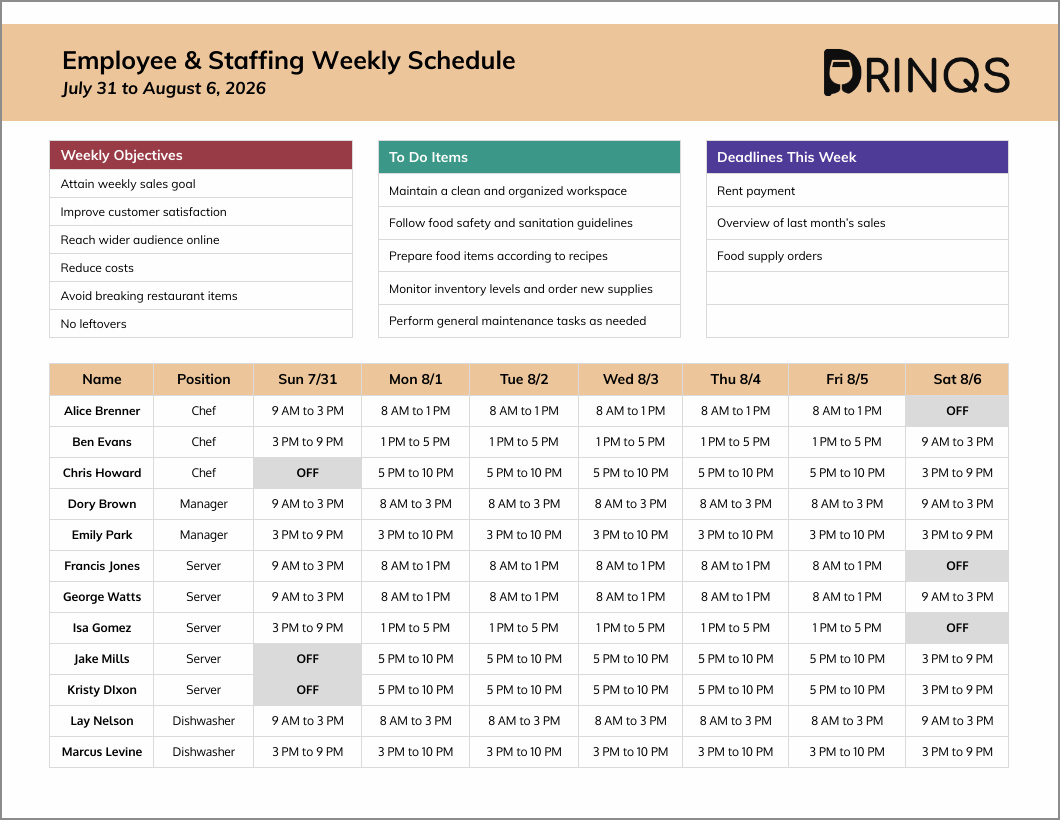
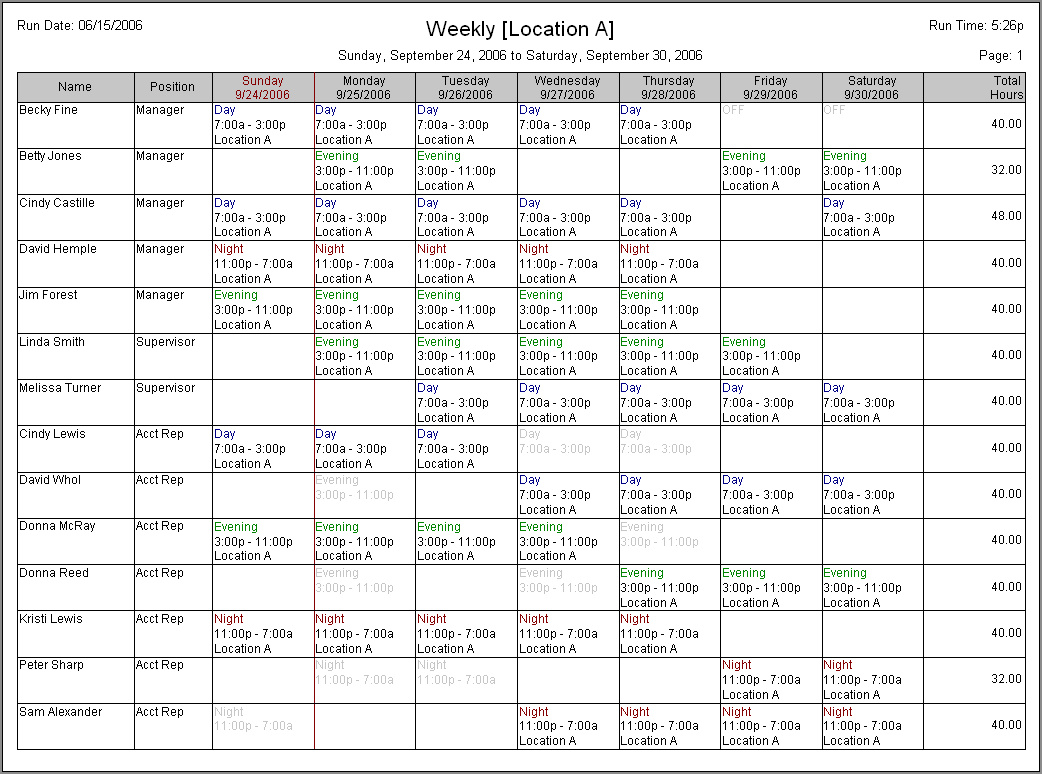
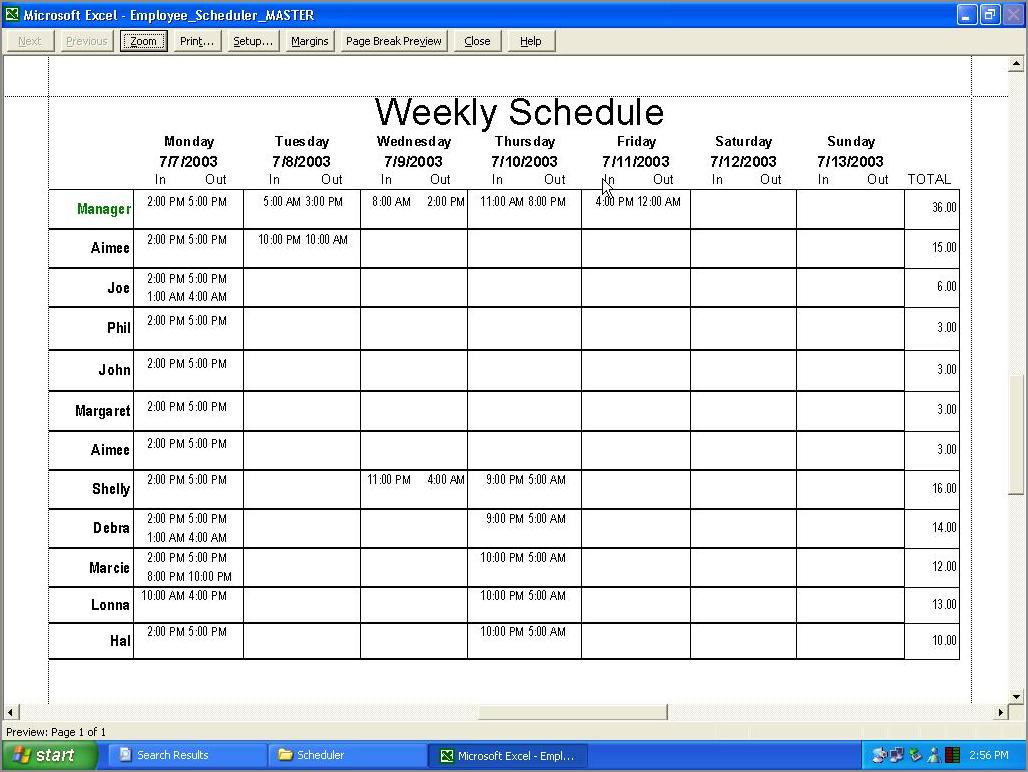
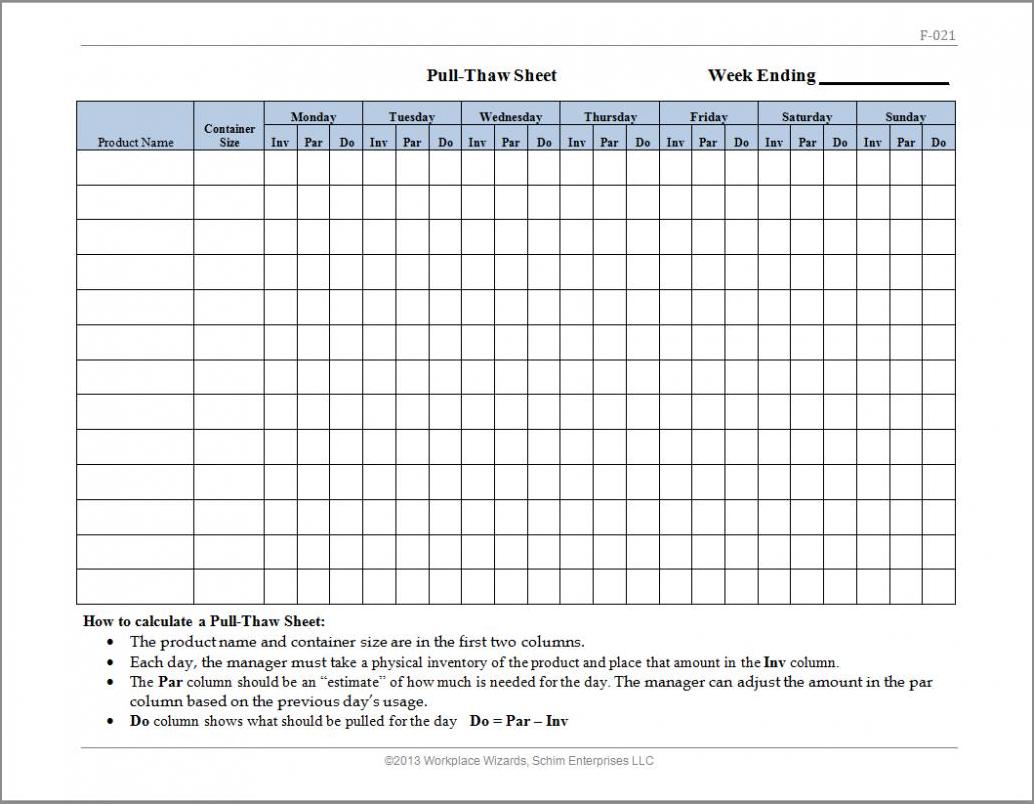
The Benefits of a Well-Structured Restaurant Schedule
A well-structured restaurant schedule brings several benefits to both the business and its employees. Here are some of the advantages:
- Optimized Staffing: By accurately forecasting staffing needs, a well-structured schedule ensures that the right number of employees is scheduled at all times, preventing understaffing or overstaffing situations.
- Increased Efficiency: With clearly assigned tasks and roles, employees can work more efficiently, leading to smoother operations and faster service.
- Improved Customer Experience: A well-planned schedule ensures that there are enough staff members available to attend to customers promptly. This leads to shorter wait times and a more enjoyable dining experience.
- Cost Savings: By controlling labor costs and avoiding unnecessary overtime, a well-structured schedule helps in reducing expenses and improving profitability.
- Enhanced Employee Satisfaction: Providing a predictable schedule in advance allows employees to plan their personal lives, leading to higher job satisfaction and better work-life balance.
- Reduced Employee Turnover: A fair and balanced schedule that takes into account employee preferences and availability can help in reducing employee turnover and retaining top talent.
Conclusion
Creating a well-structured restaurant schedule is essential for efficient operations and a positive dining experience. By carefully analyzing historical data, considering employee availability, and utilizing scheduling software, you can create an effective schedule that optimizes staffing, improves efficiency, and enhances customer satisfaction. Regular communication, feedback, and monitoring will help in fine-tuning the schedule and ensuring continued success in managing your restaurant’s operations.
Restaurant Schedule Template Word – Download
